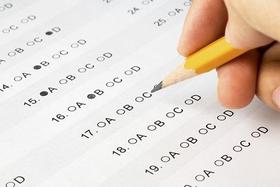The percentage of students achieving proficiency in math is ≥50% (which is lower than the Alaska state average of 69%). The percentage of students achieving proficiency in reading/language arts is ≥50% (which is lower than the Alaska state average of 79%).
Quick Stats (2025)
- Grades: Kindergarten-12
- Math Proficiency: ≥50%
- Reading Proficiency: ≥50%
- Source: National Center for Education Statistics (NCES), AK Dept. of Education
School Overview
Grades Offered
Grades Kindergarten-12
(Primarily virtual)
(Primarily virtual)
Total Students (19-20)
5 students
Total Classroom Teachers (17-18)
1 teacher
School Rankings
Math Test Scores (% Proficient)
(11-12)≥50%
69%
Reading/Language Arts Test Scores (% Proficient)
(11-12)≥50%
79%
Student : Teacher Ratio
n/a
15:1
American Indian
(19-20)n/a
23%
Asian
(19-20)n/a
6%
Hispanic
(19-20)n/a
7%
Black
(19-20)n/a
3%
White
(19-20)40%
47%
Hawaiian
(19-20)n/a
3%
Two or more races
(19-20)60%
11%
School Statewide Testing
School District Name
Source: National Center for Education Statistics (NCES), AK Dept. of Education
Profile last updated: 11/17/2024
Frequently Asked Questions
What percent of students have achieved state testing proficiency in math and reading?
≥50% of students have achieved math proficiency (compared to the 69% AK state average), while ≥50% of students have achieved reading proficiency (compared to the 79% AK state average).
How many students attend Dillingham Correspondence School?
5 students attend Dillingham Correspondence School.
What is the racial composition of the student body?
60% of Dillingham Correspondence School students are Two or more races, and 40% of students are White.
What grades does Dillingham Correspondence School offer ?
Dillingham Correspondence School offers enrollment in grades Kindergarten-12 (Primarily virtual).
What school district is Dillingham Correspondence School part of?
Dillingham Correspondence School is part of Dillingham City School District.
School Reviews
Review Dillingham Correspondence School. Reviews should be a few sentences in length. Please include any comments on:
- Quality of academic programs, teachers, and facilities
- Availability of music, art, sports and other extracurricular activities
Recent Articles

43 Fantastic ESL Resources for Students
We've put together this ESL resource guide to help students, from teens to adults, get the help they need to achieve their goals with learning English

Segregation in K-12 Education: Colonial Era
Explore the origins of educational segregation during the colonial era and the differential treatment of Native American, African American, and white students. This article delves into the historical context, policies, and societal attitudes that shaped early education in colonial America, highlighting the disparities and injustices that persisted within the schooling systems of that time.

2011 Classroom Size Update: Are Classes Still Growing Larger?
Since the recession, public school classrooms have seen major budget cuts - and many increases in class sizes. How is the situation in 2011? Read this article to find out.





